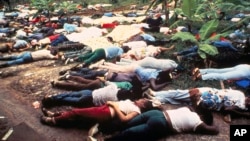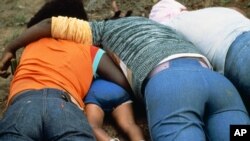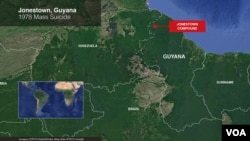Thirty-eight years ago, the bodies of more than 900 members of the Peoples Temple, led by cult leader Jim Jones, were found in a compound in a town knowns as Jonestown in the southern American nation of Guyana.
The mass suicide followed the murder of U.S. Representative Leo Ryan and four members of his delegation on November 18, 1978, who had gone to Jonestown to investigate claims of abuse.
Later that day, members were directed by Jones to commit an act of “revolutionary suicide” by drinking fruit punch laced with cyanide and sedatives as armed guards stood by.
The next day, Guyanese authorities discovered the gruesome scene: dozens of bloated bodies of men, women and children, many with their arms around one another, strewn around the compound’s pavilion.
Jones, age 47, was discovered at the compound, dead from a single bullet wound to the head, believed to be self-inflicted. Before the 9/11 terrorist attacks, the Jonestown massacre was the single largest loss of American civilians in a non-natural disaster.
A compelling, charismatic cult leader
Accounts by many former followers of Jim Jones describe his church as a “home” and a place of great joy and happiness.
During a time a strained race relations in America — of churches that were largely segregated, Jones actively recruited both blacks and whites into his church. He broke new ground, attracting college educated professionals, young and old African-Americans and whites from a range of socio-economic backgrounds.
Some white church leaders distanced themselves from Jones, criticizing him for opening his doors to black Americans.
He had a dark side that became more evident as his church moved from Indiana to California and, ultimately, Guyana.
Jones had grown up poor and struggled in a deeply dysfunctional family. His message of racial equality and a socialist society was unusual and drew poor and disenfranchised converts.
Of the 918 members who drank the poison under orders that night in Guyana, 276 were children.









